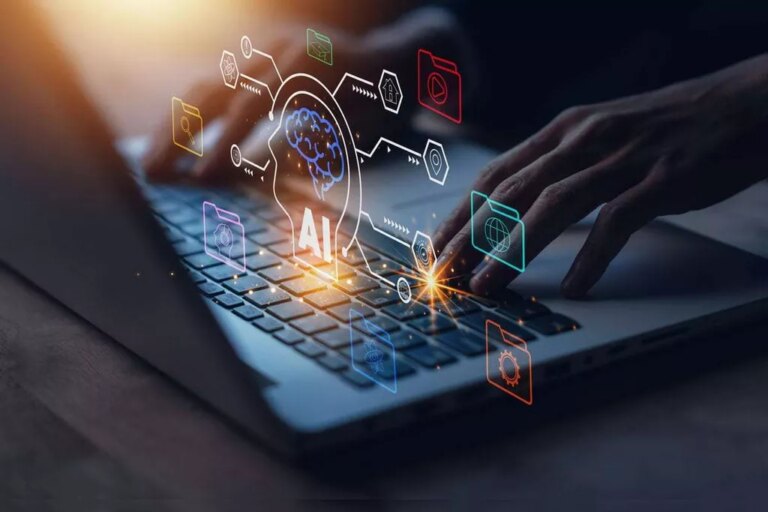For example, this one case, this is an actually experiment in DriverlessAI. This is bus ridership, and this location A, this is the AI in Manufacturing rider forecast for next week. For the same week I have a location two with a forecast, which is higher than the location one.
Ai Build raises $8.5 million to expand the use of AI in additive … – 3D Printing Industry
Ai Build raises $8.5 million to expand the use of AI in additive ….
Posted: Mon, 23 Oct 2023 13:09:32 GMT [source]
Be aware that big tech is easy to get into, but hard to get out of. A more advanced application of AI involves turning tasks that have generally required years of experience into more exact, scientific procedures that lead to the right outcomes. Think of, for instance, how only an experienced operator has been able to manipulate a machine into just the right shape. Once AI gets to know your working environment via sensors and cameras, it can learn the warning signs of potential safety threats and alert floor managers to mitigate issues. Fundamentally, AI is a set of empirical connections and patterns the computer sees that make probabilistic predictions. For example, in ChatGPT, when you ask a question, it draws on its entire data set—i.e., everything written on the internet—for things that reference your question.
A UK Exhibition Showcases Net-Zero Architecture—and the Industry’s Way Forward
How do you actually maximize the yield, then you’re looking at demand forecasting. That means to actually forecast the sales of this particular product, based on the demand in the market. When we look at sales forecast alone, we can typically look at this is how much we sell during this period of time last year. This should be how much we’d be selling this year, but no one will know that COVID-19 is coming, and no one will actually predict sales at that optimal level. I guess the way you look at it, there are multiple ways of substaining in terms of wastage, in terms of optimizing processes. Like what I mentioned, with AI you can actually reduce costs and also maximize the use.
With the ability to automate what would otherwise be a costly process, AI can be a game-changer at all levels of the value chain – this is particularly significant in the manufacturing industry. It uses IoT (Internet of Things) in conjunction with machine learning to track machinery data, before collecting data points, finding signals—and making the necessary adjustments so that components and assets don’t break down. Computer vision is also replacing the spreadsheets and clipboards that have been so intrinsic to inventory counts over the years with a platform that now displays automatically the information required in real time. Computer vision automates the inventory management process by using techniques like object detection to track stock in real-time. It can locate empty containers, and ensure that restocking is fully optimised.
Design customization
We take news data and stuff like that, then we put it into Q, and then we actually do a more effective sales forecast. Usually it’s a surface protein on a cancer cell that you want to antibody to bind to and cure the cancer cell. Once you have identified the right target, you need to find out which genes produce this target. Then you take it out, and you put it inside a special vehicle called vectors. It helps you to make multiple copies of the antigen, which is you attack it.
By experimenting with AI applications now, industrial companies can be well positioned to generate a tremendous amount of value in the years ahead. The term “artificial intelligence” is suffering from severe overuse. It has almost become shorthand for any application of cutting-edge technology, obscuring its true definition and purpose. Therefore, it’s helpful to clearly define AI and its uses for industrial companies.
The case for manufacturers with heavy assets to apply AI
Since 2017, Delta Bravo has worked on about 90 projects and has learned what works best and produces significant return on investment (ROI), especially for smaller manufacturers. AI projects improved equipment uptime, increased quality and throughput, and reduced scrap. With the healthier bottom lines and increased profits came lessons learned. Rick identified key drivers for successful AI implementation, potential pitfalls and best practices and shared some pro tips. Simply put, AI occurs when computers are programmed to think and learn like humans. Developers create algorithms that train AI engines on datasets—some of them very, very massive—so that they can develop the ability to perceive their environment and make decisions.

Okay, so in the conclusions, let me just sum up what have I talked about for pharmaceutical manufacturing. In the midst of pandemic, we need to get the drugs out very, very quickly, and patient can not afford to pick up, so we can use AI to do predictive maintenance. Biologic medicines might be safe, and so we can use AI to predict the cytotoxicity, and also hopefully to reduce the dependence on animal models.
Generative design
But of course, in that kind of quantity that you put it on your shelf and it stays on the shelf for too long. You do not want to buy at a low price where you keep all these stocks in your warehouse for a long time where it’s not moving because of low demand. When we look at using AI, you can actually get the base model in terms of the demand. Will it stay on my shelf for the next few weeks, or once I get them in and will they start moving, of thing.
- Of course, a lot of the products can actually help with a lot of organizations, as many understand that H2o has around 10% of the Kaggle Grandmasters of the world.
- If you know welding, when we look at a welding process, it typical requires high current and a relatively low voltage.
- This can be frustrating if your job involves hiring new employees quickly to fill employee shortages.
- However, for each antibody to be produced, it costs the pharmaceutical companies years, and from they have billions of dollars of investment.
- For many companies, access to data and deep insights is all they need to invest in artificial intelligence, but many companies need direction to understand what level of investment will bring the most value.
- The usual steps needed for manual form processing are either reduced or eliminated altogether, which at the same time minimises—or altogether eradicates—human error.
And the problem is that quality-related costs are putting a huge dent into sales revenue (often as much as 20%, but sometimes as high as 40%). Using V7’s software, you can train object detection, instance segmentation and image classification models to spot defects and anomalies. Digital twins allow manufacturers to gain a clear view of the materials used and provide the opportunity to automate the replenishment process. The COVID-19 pandemic also increased the interest of manufacturers in AI applications. As seen on Google Trends graph below, the panic due to lockdowns may have forced manufacturers to shift their focus to artificial intelligence.
Role of AI in the Industrial Sector
Thanks to IoT sensors, manufacturers can collect large volumes of data and switch to real-time analytics. This allows manufacturers to reach insights sooner so that they can make operational, real-time data-driven decisions. Due to the shift toward personalization in consumer demand, manufacturers can leverage digital twins to design various permutations of the product. This allows customers to purchase the product based on performance metrics rather than its design.

Because of these regulatory, biomanufacturing test facility all have the sensors and edge devices places all over the facilities to detect the filter, the ventilation, the lighting, and also who can access this facility, and so on. All this data can be used to do predictive maintenance and how. You can collect the data and the power meter pressure, temperature like things, and put it as a feature and the human traffic who came in and who went out, for how long, so can also be used as a feature.
The Slow Acceptance Of Digitalization
In doing so, they gain a better understanding of today’s evolving technologies and the value they deliver. Over the past three decades, computer-aided engineering (CAE) and simulation have helped, but the limits on their computing power are preventing them from fully exploring the design space and optimizing performance on complex problems. For example, components typically have more than ten design parameters, with up to 100 options for each parameter.
